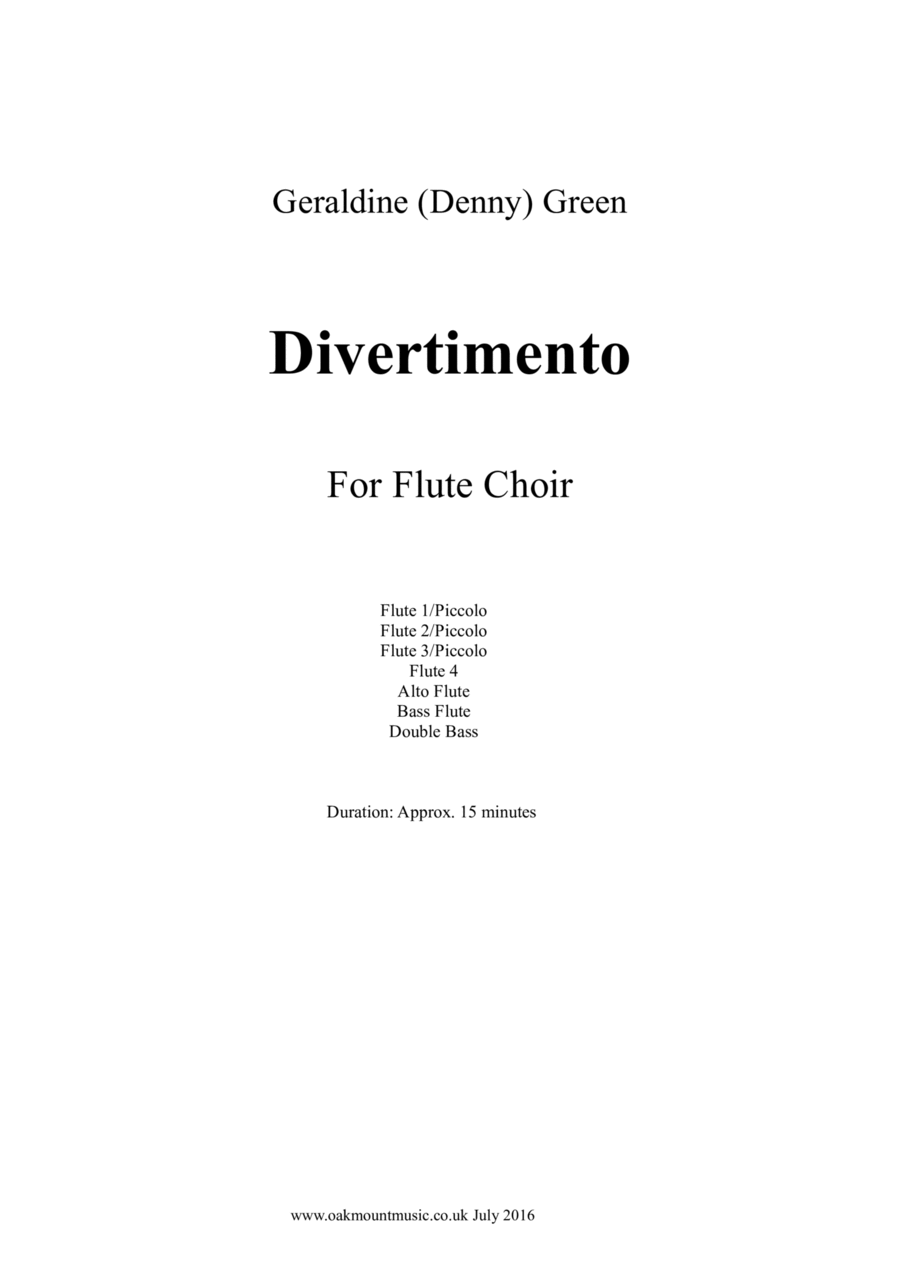Flute Choir,Woodwind Ensemble Alto Flute,Bass Flute,Piccolo - Level 5 - Digital Download SKU: A0.1314344 By Tooti Flooti. By Geraldine (Denny) Green. 21st Century,Chamber,Contemporary. 117 pages. Geraldine (Denny) Green at Oakmountmusic #903088. Published by Geraldine (Denny) Green at Oakmountmusic (A0.1314344). ALL PURCHASES COME WITH SCORE AND PARTSThe Divertimento for Flute Choir was requested by flautist David Greenalgh for the Flute choir Tooti Flooti and was written in June and July 2016. It has 3 short movements and a total duration of about 15 minutes.The outer movements are speedy, light hearted and sunny natured, while the middle movement is slower and rather haunting. The 3rd movement is the only one with a title, âThe June Prune Tuneâ, and there is a funny story behind the name. Many summers ago, my husband, Bob, and I were playing guitar and penny whistle together at home and I just happened to be snacking on dried prunes at the time. Bob joked that I should write a tune called the Prune Tune. I went a step further and said, June prune Tune, but it had to be written in June and I had to be eating prunes while actually writing it. Well, for the two Junes of 2014 and 2015 I tried to do it but no tune came. Nothing. Silence! Then, on the 1st June 2016 I was dashing home from work and I dived into a small corner shop for a sandwich and happened to spot a pack of dried prunes along with other dried fruits. So, in the local park, I stopped to have my butty and prunes while watching the birds and as I was eating the prunes a tune suddenly was there in my mind and I was subconsciously humming it. Like a thunderbolt it hit me! This was it! The June Prune Tune had arrived. Luckily I nearly always have paper on me so at once I scribbled it down, while munching very deliberately on the only two prunes left in the pack! Music doesnât always have to be filled with sorrow and sadness and turmoil, even though much of mine is. But sometimes itâs just great to let the humour and flippancy flow,too, and simply enjoy having a good joke and a laugh. The Instrumentation is:Flute 1 â doubling Piccolo, Flute 2 â doubling piccolo, Flute 3 â doubling piccolo, Flute 4, Alto flute, Bass flute and string Double Bass.As the work was written for a specific group of players, the parts are single and do not divide within themselves. This, however, should not prevent it also working well with more than one player per part.The double bass part sometimes doubles the bass flute line, but also is an independent part in its own right.
